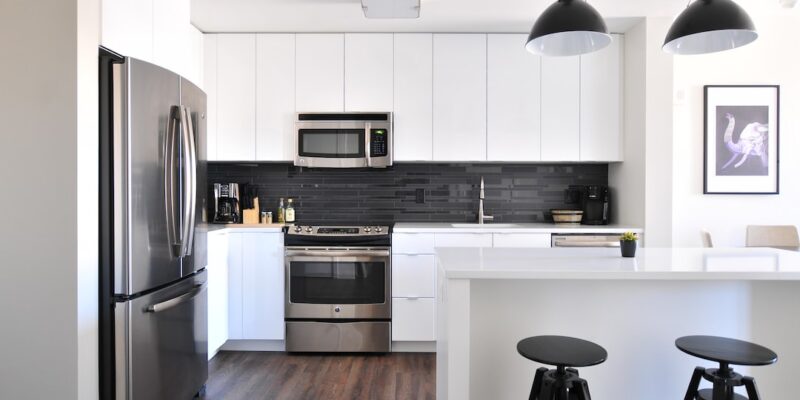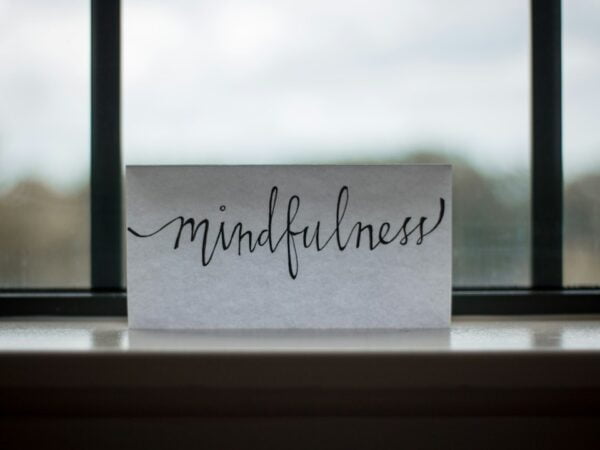
Get Fit at Home: Full-Body Workouts for a Stronger, Healthier You
Home workouts have become increasingly popular in recent years, and for good reason. With the convenience of being able to exercise in the comfort of your own home, more and more people are opting to skip the gym and create their own workout space. There are numerous benefits to working out at home, including saving time and money, avoiding crowded gyms, and having the privacy to exercise without feeling self-conscious. In this article, we will explore the benefits of home workouts, provide tips on setting up a home gym, and offer a variety of exercises for different muscle groups.
Key Takeaways
- Home workouts offer convenience and flexibility for busy schedules.
- Setting up a home gym can be affordable and space-efficient.
- Proper warm-up and cool-down exercises are crucial for injury prevention.
- Upper body, lower body, core, and full-body workouts can all be done at home with minimal equipment.
- Cardio workouts can be done without a gym membership, using options like running, jumping jacks, or dancing.
Benefits of Home Workouts
One of the main benefits of Home workouts is the time and money saved. With a home gym, you don’t have to spend time commuting to and from the gym or waiting for equipment to become available. You can simply walk into your designated workout space and start exercising. Additionally, home workouts eliminate the need for expensive gym memberships or personal trainers. You can invest in a few key pieces of equipment and create a workout routine that suits your needs and goals.
Another advantage of working out at home is the ability to avoid crowded gyms. Many people find it uncomfortable or intimidating to exercise in front of others, especially if they are just starting their fitness journey. By working out at home, you can exercise in privacy and focus on your own progress without feeling self-conscious. This can be particularly beneficial for individuals who are new to exercise or have specific health concerns that they prefer to address in a more private setting.
Furthermore, home workouts give you more control over your workout environment. You can choose the music you want to listen to, set the temperature to your liking, and create an atmosphere that motivates you to exercise. This level of control can enhance your overall workout experience and make it more enjoyable.
Setting Up Your Home Gym
When setting up a home gym, it’s important to choose the right equipment that suits your fitness goals and budget. Start by considering what type of exercises you enjoy and what areas of your body you want to target. Some essential equipment for a home gym includes dumbbells, resistance bands, a stability ball, and a yoga mat. These items are versatile and can be used for a wide range of exercises.
Next, find the right space in your home for your workout area. It could be a spare room, a corner of your living room, or even your garage. Make sure the space is well-ventilated and has enough room for you to move around comfortably. If possible, try to create a dedicated space solely for exercise to help you mentally separate it from other activities.
Once you have chosen your equipment and designated your workout space, it’s important to create a workout plan. This will help you stay organized and ensure that you are targeting all areas of your body. Consider incorporating a mix of strength training exercises, cardio workouts, and flexibility exercises into your routine. It’s also important to prioritize safety by using proper form and gradually increasing the intensity of your workouts over time.
Warm-Up and Cool-Down Exercises
| Exercise Type | Benefits | Duration | Frequency |
|---|---|---|---|
| Warm-Up | Prepares the body for physical activity, increases heart rate and blood flow, reduces risk of injury | 5-10 minutes | Before every workout |
| Cool-Down | Helps the body recover after physical activity, reduces heart rate and blood pressure, prevents dizziness and fainting | 5-10 minutes | After every workout |
Before diving into your workout, it’s crucial to warm up your muscles and prepare them for the upcoming activity. A warm-up increases blood flow to the muscles, improves flexibility, and reduces the risk of injury. Some examples of warm-up exercises that can be done at home include jogging in place, jumping jacks, arm circles, and leg swings.
Similarly, cooling down after a workout is essential to help your body recover and prevent muscle soreness. Cooling down allows your heart rate to gradually return to its resting state and helps flush out lactic acid from your muscles. Some cool-down exercises that can be done at home include walking or jogging slowly, stretching major muscle groups, and deep breathing exercises.
Upper Body Workouts
Working out your upper body is important for building strength and improving posture. There are several exercises that can be done at home to target your upper body muscles. Push-ups are a classic exercise that targets the chest, shoulders, and triceps. To perform a push-up, start in a plank position with your hands slightly wider than shoulder-width apart. Lower your body until your chest nearly touches the floor, then push back up to the starting position.
Pull-ups are another effective exercise for the upper body, specifically targeting the back and biceps. If you have a pull-up bar at home, simply grip the bar with your palms facing away from you and pull your body up until your chin is above the bar. If you don’t have a pull-up bar, you can use resistance bands or a sturdy door frame to perform modified pull-ups.
Dumbbell curls are great for targeting the biceps. Hold a dumbbell in each hand with your palms facing forward. Slowly curl the weights up towards your shoulders, keeping your elbows close to your sides. Lower the weights back down to the starting position and repeat.
Lower Body Workouts

Strengthening your lower body is important for overall stability and mobility. There are several exercises that can be done at home to target your lower body muscles. Squats are a compound exercise that targets the quadriceps, hamstrings, and glutes. To perform a squat, stand with your feet shoulder-width apart and lower your body as if you were sitting back into a chair. Keep your chest lifted and your knees in line with your toes. Push through your heels to return to the starting position.
Lunges are another effective exercise for the lower body, specifically targeting the quadriceps, hamstrings, and glutes. Start by standing with your feet hip-width apart. Take a step forward with one foot and lower your body until both knees are bent at a 90-degree angle. Push through your front heel to return to the starting position and repeat on the other side.
Calf raises are great for targeting the calf muscles. Stand with your feet hip-width apart and slowly rise up onto your toes. Hold for a moment at the top, then lower your heels back down to the ground. Repeat for several repetitions.
Core Workouts
Strengthening your core is important for stability and balance. There are several exercises that can be done at home to target your core muscles. Planks are a popular exercise that targets the entire core, including the abs, obliques, and lower back. Start by getting into a push-up position, then lower yourself onto your forearms. Keep your body in a straight line from head to toe, engaging your core muscles. Hold this position for as long as you can while maintaining proper form.
Crunches are another effective exercise for targeting the abs. Lie on your back with your knees bent and feet flat on the floor. Place your hands behind your head, then lift your upper body off the ground using your abdominal muscles. Lower back down to the starting position and repeat for several repetitions.
Russian twists are great for targeting the obliques. Sit on the floor with your knees bent and feet lifted off the ground. Lean back slightly and twist your torso from side to side, touching the floor on each side with your hands.
Full-Body Workouts
Full-body workouts are a great way to engage multiple muscle groups and burn calories efficiently. There are several exercises that can be done at home to target your entire body. Burpees are a challenging exercise that targets the legs, arms, chest, and core. Start by standing with your feet shoulder-width apart. Lower yourself into a squat position, then place your hands on the ground in front of you and kick your feet back into a plank position. Jump your feet back up towards your hands, then explosively jump up into the air, reaching your arms overhead. Land softly and repeat for several repetitions.
Mountain climbers are another effective exercise for targeting the entire body. Start in a plank position with your hands directly under your shoulders. Bring one knee towards your chest, then quickly switch legs, as if you were running in place. Continue alternating legs for several repetitions.
Jumping jacks are a classic exercise that targets the legs, arms, and cardiovascular system. Start with your feet together and arms by your sides. Jump your feet out to the sides while simultaneously raising your arms overhead. Jump back to the starting position and repeat for several repetitions.
Cardio Workouts
Cardiovascular exercise is important for improving heart health and burning calories. There are several cardio exercises that can be done at home to get your heart rate up. Jumping rope is a great cardio exercise that can be done in a small space. Simply grab a jump rope and start jumping, aiming to keep a steady pace.
Running in place is another effective cardio exercise that requires minimal space. Stand with your feet hip-width apart and start jogging in place, lifting your knees as high as you can.
High knees are a dynamic cardio exercise that targets the legs and core. Stand with your feet hip-width apart and start jogging in place, lifting your knees up towards your chest as high as you can.
Tracking Your Progress and Staying Motivated
Tracking your progress is important for staying motivated and seeing results over time. Keep a workout journal or use a fitness app to record your workouts, including the exercises performed, sets, reps, and weights used. This will help you track your progress and make adjustments to your routine as needed.
Setting goals is also crucial for staying motivated when working out at home. Whether it’s increasing the number of push-ups you can do or running a certain distance, having a goal to work towards can keep you focused and motivated. Break your goals down into smaller, achievable milestones to make them more manageable.
Finding a workout buddy or joining an online fitness community can provide support and accountability. Share your goals and progress with others who have similar interests and encourage each other along the way. Having someone to share your successes and challenges with can make the journey more enjoyable and help you stay on track.
In conclusion, home workouts offer numerous benefits, including convenience, cost-effectiveness, and privacy. By setting up a home gym and incorporating a variety of exercises into your routine, you can achieve your fitness goals without ever leaving your house. Remember to prioritize safety, warm up and cool down properly, and track your progress to stay motivated. With dedication and consistency, you can create a successful home workout routine that fits your lifestyle and helps you achieve the results you desire.
FAQs
What are full-body home workouts?
Full-body home workouts are exercise routines that target all major muscle groups in the body, including the chest, back, arms, legs, and core. These workouts can be done at home without the need for gym equipment.
What are the benefits of full-body home workouts?
Full-body home workouts can help improve overall fitness, increase muscle strength and endurance, burn calories, and promote weight loss. They can also be convenient and cost-effective, as they can be done at home without the need for expensive gym memberships or equipment.
What exercises can be included in full-body home workouts?
Full-body home workouts can include a variety of exercises, such as push-ups, squats, lunges, planks, burpees, and jumping jacks. These exercises can be modified to suit different fitness levels and can be combined into a circuit or performed individually.
How often should I do full-body home workouts?
The frequency of full-body home workouts depends on individual fitness goals and schedules. However, it is generally recommended to do full-body workouts at least two to three times per week to see results.
Do I need equipment for full-body home workouts?
While some full-body home workouts may require equipment such as dumbbells or resistance bands, many exercises can be done using just body weight. This makes full-body home workouts accessible to everyone, regardless of equipment availability.
Are full-body home workouts suitable for beginners?
Yes, full-body home workouts can be modified to suit different fitness levels, including beginners. It is important to start with basic exercises and gradually increase intensity and difficulty as fitness improves. Consulting with a fitness professional or doctor before starting a new exercise routine is also recommended.


















